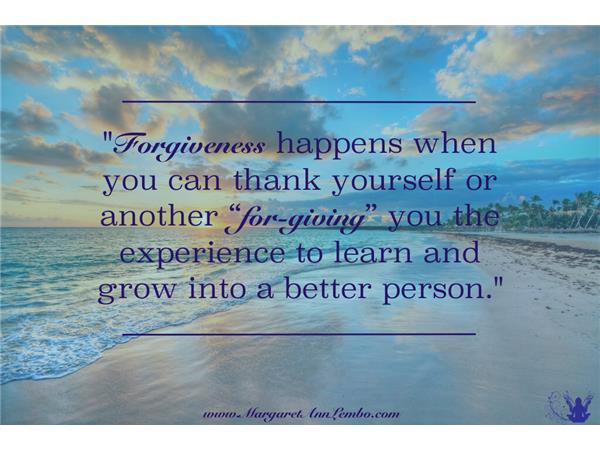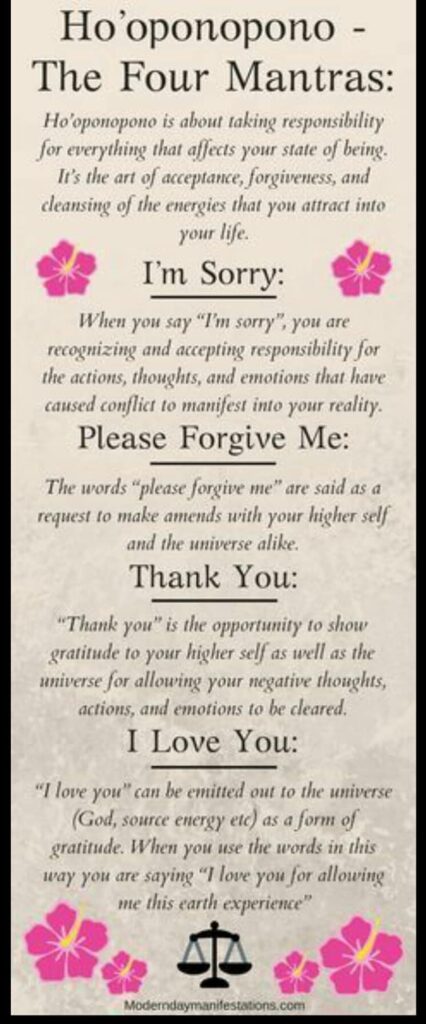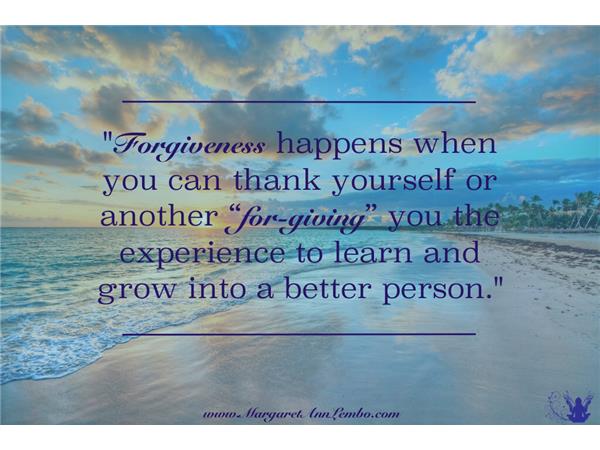In this article, you will learn about the important role that gratitude plays in Ho’oponopono. Ho’oponopono is a traditional Hawaiian healing practice that focuses on forgiveness, reconciliation, and taking responsibility for our own thoughts and actions. Gratitude is one of the key elements in this practice, as it helps us to cultivate a positive mindset and appreciate the abundance and blessings in our lives.
Gratitude plays a crucial role in Ho’oponopono because it helps to shift our focus from negativity and resentment to positivity and appreciation. When we express gratitude, we are acknowledging the good things that are already present in our lives, which allows us to attract more positivity and abundance. Gratitude also helps us to let go of past hurts and grievances, as it reminds us to focus on what is going well rather than dwelling on what has gone wrong. By incorporating gratitude into our Ho’oponopono practice, we can deepen our healing journey and create a more harmonious and joyful life.

Understanding Ho’oponopono
Ho’oponopono is an ancient Hawaiian practice that focuses on healing and restoring harmony in relationships. It is a process of forgiveness, reconciliation, and letting go of negative energy. The practice has its roots in the traditional culture of Hawaii and has been passed down through generations.
Origin and history
Ho’oponopono traces its origins back to the ancient Polynesian settlers in Hawaii. It was traditionally used to resolve conflicts and restore balance within families and communities. The word “Ho’oponopono” itself means to make things right, to correct, or to rectify. It is based on the belief that all problems and conflicts arise from internal disharmony, and by addressing and healing our own inner wounds, we can bring healing to others and the world around us.
Over time, Ho’oponopono has evolved and adapted to fit the needs of modern society. Its principles and practices have been integrated into various therapeutic disciplines and personal development programs, gaining recognition and popularity beyond the shores of Hawaii.
Key principles
The key principles of Ho’oponopono revolve around taking responsibility for one’s actions, thoughts, and emotions. It emphasizes the power of forgiveness, gratitude, and love as transformative forces. The practice believes in the interconnectedness of all beings and the importance of healing oneself to bring harmony to the collective consciousness.
Purpose and benefits
The purpose of Ho’oponopono is to release the negative emotions and memories that hold us back from living a fulfilled life. It aims to bring about emotional healing, forgiveness, and reconciliation. By practicing Ho’oponopono, individuals can experience a sense of inner peace, improved relationships, and overall well-being.
Exploring Gratitude
Definition and importance
Gratitude is the practice of acknowledging and appreciating the good in one’s life. It is an attitude of thankfulness and a recognition of the blessings, big and small, that surround us every day. Gratitude has long been recognized as a powerful emotion that can shift our focus from what is lacking to what is abundant in our lives.
Cultivating gratitude has numerous benefits on both our mental and physical well-being. It has been shown to reduce stress, improve sleep quality, enhance resilience, and boost overall happiness. Gratitude is a practice that can be integrated into our daily lives, allowing us to experience greater joy and contentment.
Scientific research on gratitude
Scientific research has consistently shown the positive impact of gratitude on our well-being. Multiple studies have found that individuals who regularly practice gratitude experience lower levels of depression, anxiety, and stress. They also tend to have stronger immune systems, better cardiovascular health, and improved sleep patterns.
Gratitude has been linked to increased levels of positive emotions such as joy, optimism, and happiness. It helps shift our focus from negative thought patterns to more positive and empowering ones. The practice of gratitude rewires our brains to notice and appreciate the good in our lives, leading to a more positive and fulfilling existence.
Practicing gratitude
Practicing gratitude is simple yet profound. It involves consciously choosing to focus on the positive aspects of our lives and expressing appreciation for them. There are various ways to incorporate gratitude into our daily routines, such as keeping a gratitude journal, expressing gratitude to others, or engaging in gratitude meditation.
Gratitude journaling is a popular practice where individuals write down three to five things they are grateful for each day. This simple act of writing helps to amplify the positive emotions associated with gratitude and reinforces the habit of noticing and appreciating the good in life.
Expressing gratitude to others is another powerful way to cultivate gratitude. Taking the time to thank someone for their kindness or acknowledging the positive impact they have had on your life not only spreads positivity but also strengthens relationships and deepens connections.
Gratitude meditation involves focusing on feelings of gratitude and appreciation during meditation. By intentionally directing our thoughts towards gratitude, we train our minds to be more attuned to the positive aspects of our lives and develop a greater sense of gratitude.
Gratitude in Ho’oponopono
The concept of gratitude in Ho’oponopono
In Ho’oponopono, gratitude is seen as a fundamental aspect of healing and transformation. It is viewed as an essential ingredient in the process of releasing negative energy and bringing about positive change. Gratitude is considered a powerful vibration that can transform our thoughts, emotions, and experiences.
Gratitude as a healing tool
In the practice of Ho’oponopono, gratitude is seen as a healing tool that can dissolve attachments to negative memories and emotions. By expressing gratitude for the challenging or painful experiences in our lives, we release the hold they have on us and open ourselves to greater healing and growth.
Gratitude allows us to shift our perspective from victimhood to empowerment. Instead of dwelling on the pain and suffering, we can find gratitude for the lessons learned, the strength gained, and the opportunities for growth that come from those experiences.
Gratitude as a cleansing practice
In Ho’oponopono, gratitude is also considered a cleansing practice. By expressing gratitude, we release any negative energy or attachments associated with a particular person, situation, or memory. Gratitude acts as a purifying force that clears away any residual negativity and allows for healing and transformation to take place.
How Gratitude Supports Ho’oponopono
The role of gratitude in forgiveness
Forgiveness is a central aspect of Ho’oponopono, and gratitude plays a significant role in this process. When we cultivate gratitude, we naturally become more open-hearted and compassionate. We begin to see the humanity and interconnectedness in others, allowing us to let go of resentment and anger.
Gratitude helps us shift our focus from the harm inflicted by others to the lessons and blessings they bring into our lives. It allows us to find gratitude for the opportunity to practice forgiveness and release the burden of carrying grudges.
Expanding awareness through gratitude
Gratitude expands our awareness and helps us recognize the interconnectedness of all beings. When we express gratitude, we acknowledge the contributions and support we receive from others, as well as the impact we have on their lives.
Through gratitude, we become more aware of the web of relationships and interconnectedness that exists. This expanded awareness fosters a sense of responsibility and encourages us to act in ways that promote harmony and well-being for ourselves and others.
Strengthening the connection with divine energy
Gratitude is also seen as a way to strengthen our connection with divine energy or the higher power. It is believed that by expressing gratitude, we align ourselves with the divine flow of love and abundance. Gratitude opens us up to receive blessings and guidance from the universe, leading us towards our highest potential.
Gratitude practices in Ho’oponopono serve as a means to attune ourselves to the divine energy and to deepen our spiritual connection. By cultivating gratitude, we acknowledge and appreciate the grace that flows through our lives, inviting more of it in.
Gratitude Practices in Ho’oponopono
Meditation and affirmation techniques
Meditation is a powerful practice in Ho’oponopono that can be combined with gratitude. By incorporating gratitude into our meditation practice, we can deepen our connection with ourselves and the divine energy. During meditation, we can cultivate gratitude by focusing on the blessings and abundance in our lives, repeating gratitude affirmations, or simply sitting in a state of gratitude.
Affirmations are positive statements that can be used to reinforce the practice of gratitude. By repeating affirmations such as “I am grateful for all the blessings in my life” or “I am open to receiving more love and abundance,” we create a positive mental framework that supports our gratitude practice.
Keeping a gratitude journal
Keeping a gratitude journal is another effective way to incorporate gratitude into Ho’oponopono. Each day, take a few moments to write down three to five things you are grateful for. It can be as simple as appreciating a beautiful sunrise, a kind gesture from a stranger, or the love and support of your loved ones. Writing down these moments of gratitude not only helps to reinforce the positive emotions associated with gratitude but also serves as a reminder of the abundance in your life.
Expressing gratitude to others
Expressing gratitude to others is a powerful practice that can deepen your relationships and bring about positive shifts. Take time to express your appreciation to the people in your life, whether it be through spoken words, handwritten notes, or acts of kindness. By expressing gratitude, you not only uplift others but also reinforce the habit of gratitude within yourself.
Benefits of Incorporating Gratitude in Ho’oponopono
Emotional healing and release
Incorporating gratitude into Ho’oponopono enhances the emotional healing process. By expressing gratitude, we release negative emotions and attachments associated with past hurts, allowing us to heal and move forward. Gratitude helps us find meaning and purpose in our experiences, leading to greater emotional well-being.
Creating positive shifts in relationships
Gratitude has the power to create positive shifts in relationships. By expressing gratitude to others, we strengthen the bond and foster deeper connections. Gratitude helps us see the goodness in others and appreciate their presence and contributions in our lives. As we cultivate gratitude, our relationships become more harmonious and fulfilling.
Enhancing personal well-being
Practicing gratitude in Ho’oponopono enhances personal well-being. By focusing on the positive aspects of our lives, we shift our mindset towards optimism and abundance. This shift in perspective leads to increased happiness, contentment, and overall well-being. Gratitude is a powerful tool for self-care and self-love, allowing us to take better care of ourselves and embrace the fullness of life.

Gaining a Deeper Understanding
Exploring the philosophy of Ho’oponopono
To gain a deeper understanding of the role of gratitude in Ho’oponopono, it is important to explore the broader philosophy behind this ancient Hawaiian practice. Ho’oponopono is based on the principles of forgiveness, reconciliation, and personal responsibility. It emphasizes the power of love, gratitude, and compassion in healing relationships and restoring harmony.
Gratitude as a foundational principle
Gratitude is seen as a foundational principle in Ho’oponopono. It is believed that by cultivating gratitude, we align ourselves with the divine energy and open the pathway for healing and transformation. Gratitude is seen as a necessary step in the process of forgiveness and reconciliation, bringing about a sense of peace and wholeness.
Seeing the bigger picture
Gratitude in Ho’oponopono allows us to see the bigger picture and understand that all experiences, even the most challenging ones, have a purpose and a lesson to teach us. By finding gratitude in difficult situations, we shift our perspective from victimhood to empowerment, deepening our understanding of ourselves and our connection to others.
Case Studies and Testimonials
Real-life experiences of gratitude in Ho’oponopono
Real-life experiences of gratitude in Ho’oponopono have shown transformative results. Individuals who have incorporated gratitude into their Ho’oponopono practice have reported increased levels of peace, joy, and overall well-being. They have experienced healing and release from negative emotions and have witnessed positive shifts in their relationships.
Impact on individuals and communities
Gratitude in Ho’oponopono has not only impacted individuals but entire communities. Through the practice of gratitude, communities have come together in a spirit of forgiveness and reconciliation, healing longstanding conflicts and divisions. Gratitude has the power to bring about positive change not just in individuals but also in the collective consciousness of communities.
Transformational journeys
Gratitude has been a catalyst for transformation in many individuals’ journeys. By integrating gratitude into their Ho’oponopono practice, individuals have experienced profound healing, personal growth, and a deepening of their connection with divine energy. The practice of gratitude has opened doors for new opportunities, abundance, and a sense of purpose.

Misconceptions and Challenges
Common misconceptions about gratitude in Ho’oponopono
There are some common misconceptions about gratitude in Ho’oponopono. One misconception is that gratitude is solely an external expression of appreciation. In Ho’oponopono, gratitude begins as an internal practice, acknowledging and appreciating the blessings in one’s life. It is not solely reliant on external circumstances or the actions of others.
Challenges faced in incorporating gratitude practices
One of the challenges faced in incorporating gratitude practices in Ho’oponopono is resistance to change. Sometimes, individuals may find it difficult to let go of negative emotions or to shift their focus towards gratitude. Overcoming this resistance requires patience, commitment, and a willingness to embrace the transformative power of gratitude.
Overcoming resistance and deep-seated beliefs
To overcome resistance and deep-seated beliefs, it is important to cultivate self-awareness and compassion. Recognize that resistance is a natural part of the healing process and that change takes time. By practicing self-compassion and nurturing a mindset of curiosity and openness, you can gradually dissolve resistance and embrace gratitude as a transformative force in your life.
Conclusion
Gratitude plays a vital role in Ho’oponopono, a Hawaiian practice of healing and transformation. It helps release negative emotions, supports forgiveness, and deepens our connection with divine energy. By incorporating gratitude practices into Ho’oponopono, we can experience emotional healing, create positive shifts in relationships, and enhance our overall well-being. Gratitude is a powerful tool that allows us to see the beauty and abundance in our lives, leading to a journey of healing, transformation, and greater fulfillment. As you continue your journey with Ho’oponopono, embrace gratitude as a foundational principle and witness the profound impact it has on your life and the world around you.

